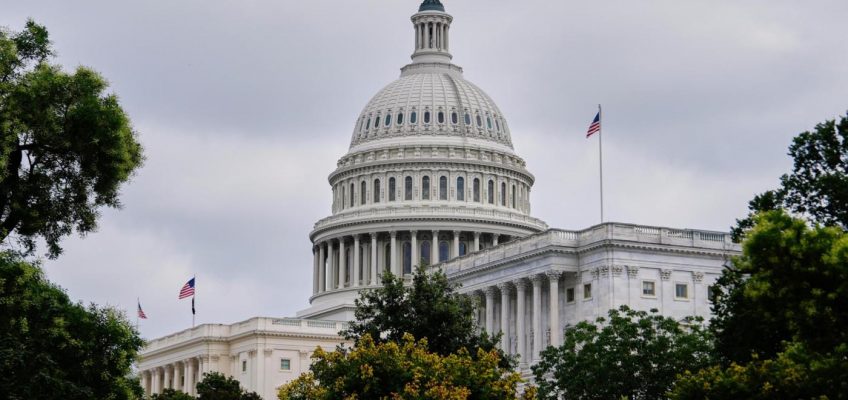Last May, a study came out suggesting that merely giving people money doesn’t do much to lift them out of poverty. Families with at least one child received $333 a month. They had more money to spend, which is a good thing, but the children fared no better than similar children who didn’t get the cash. They were no more likely to develop language skills or demonstrate cognitive development. They were no more likely to avoid behavioral problems or developmental delays.
These results shouldn’t have been a big surprise. As Kelsey Piper noted in an essay for The Argument, a different study published last year gave families $500 a month for two years and found no big effects on the adult recipients’ psychological well-being and financial security. A study that gave $1,000 a month did not produce better health, career, education or sleep outcomes or even more time with their children.
Way back in 1997, Susan E. Mayer, a University of Chicago sociologist and behavioral economist, published “What Money Can’t Buy.” She began her research believing that cash transfers would make a big difference in people’s lives but was persuaded by the evidence that even if you doubled a family’s income, it would have a limited effect on their children’s dropout and teenage pregnancy rates or other outcomes.
She stated her findings clearly: “The results in this book imply that once children’s basic material needs are met, characteristics of their parents become more important to how they turn out than anything additional money can buy.”
She added, “Parental income is not as important to children’s outcomes as many social scientists have thought.” Rising out of poverty also requires the nonmaterial qualities we now call human capital, such as skills, diligence, honesty, good health and reliability. Mayer concludes, “Children of parents with these attributes do well even when their parents do not have much income.”
With human capital, not so good
As a society, we are pretty good at transferring money to the poor, but we’re not very good at nurturing the human capital they would need to get out of poverty. As a result, we do an OK job supporting people who are in long-term poverty but a poor job of helping them lift out of poverty. As Piper noted in a subsequent post, we spend more money combating poverty today than the entire U.S. gross domestic product from 1969, yet “the share of Americans whose pretransfer income places them in absolute poverty has barely fallen.”
Piper’s essay kicked up a bit of an internet storm. You might have thought the progressive reaction would have been: We need to keep giving poor people money, but we also need to focus on the human and behavioral factors that will enable them to build comfortable, independent lives.
But that wasn’t the reaction. The progressives I saw doubled down on the thesis: Poor people just need money.
Matt Bruenig’s contention, also in The Argument, was typical. He scorned the very idea that focusing on human capital is a good way to improve social mobility. He wrote, “Cash is the key part of every welfare state in the developed world and absolutely critical for keeping poverty down.” We shouldn’t make fighting poverty overly complicated, he argued. “As a policy matter, these are mostly solved problems.” Just write people checks.
This is consistent with something I’ve noticed all my life — the materialist bent of progressive thought: the assumption that material conditions drive history, not cultural or moral ones. A couple of decades ago, Thomas Frank published “What’s the Matter With Kansas?” based on befuddlement that Kansans were apparently voting against their economic self-interest. Doesn’t economics drive voting behavior? Progressives have often argued that improving schools is mostly about spending more money, that crime is mostly the product of material deprivation.
The importance of manners and morals
Conservatism, as you know, is a complete mess in America right now. But reading conservative authors like Edmund Burke, Samuel Johnson, Fyodor Dostoyevsky, Gertrude Himmelfarb and James Q. Wilson does give you an adequate appreciation for the power of nonmaterial forces — culture, moral norms, traditions, religious ideals, personal responsibility and community cohesion. That body of work teaches you, as Burke wrote, that manners and morals are more important than laws. You should have limited expectations about politics because not everything can be solved with a policy.
Neoconservatism came along and took conservative insights and applied them to policymaking. During the Iraq War, the word “neocon” came to mean the opposite of its real meaning, but originally, it was a movement within the Democratic Party to correct the policy failures of the Great Society.
Thinkers like Irving Kristol and Nathan Glazer had been poor immigrant kids. They were willing to spend money to fight poverty, but they wanted the programs to nurture the values that they had seen firsthand help people rise: hard work, family and community cohesion, reliability, a passionate commitment to education. These values tend to inhere in communities before they are transmitted to individuals.
Progressives, by contrast, are quick to talk about money but slow to talk about the values side of the equation. That’s in part for the best of reasons. They don’t want to blame the victims or contribute to the canard that people are poor because they are lazy.
But there’s something deeper. Progressivism emerges from a different lineage. Karl Marx influenced many people who are not Marxist, and he saw the world through a material-determinism lens — people’s consciousnesses are shaped by their material conditions.
Since the dawn of the Progressive movement over a century ago, the left has been more technocratic. Those early Progressives tried to make a science of society and govern according to scientific principles.
Today, the social sciences are the narrow doorway all of human knowledge has to pass through if it’s going to influence policymaking. We want studies!
The social sciences are great. I use them all the time. But when overly quantitative, they can misrepresent reality. They see only what can be quantified. They see only masses of people whose data can be tabulated, not unique individuals.
A route to all sorts of bad judgments
As Christian Smith, a Notre Dame sociologist, has been arguing for decades, the social scientists obliterate the subjective experiences of the people they study. Human agency disappears if research subjects are reduced to a bunch of variables that can be correlated. People who overly rely on social science knowledge are going to tend to focus on money because it can be counted more easily than culture. People who rely on government to solve problems will tend to overemphasize the power of money because that’s the thing government most easily controls.
This materialistic bent leads to all sorts of bad judgments. For example, Joe Biden and his team had one job: to make sure Donald Trump never set foot in the White House again. They tried to accomplish that the only way they knew how: throw money at the problem. The vast bulk of the new Biden spending went to red states to employ workers without college degrees. Politically, the project was a complete failure. Populism is not primarily economic; it’s about respect, values, national identity and many other things. All that spending did not win anybody over.
Bret Stephens: Mass migration and liberalism’s fall
Thomas Friedman: The one danger that should unite the U.S. and China
Mary Ellen Klas: The GOP is inflating health care costs — For its own voters
Allison Schrager: Why boomers have more money than everyone else
Andreas Kluth: This war on expertise thrills America’s enemies
Today, most of our problems are moral, relational and spiritual more than they are economic. There is the crisis of disconnection, the collapse of social trust, the loss of faith in institutions, the destruction of moral norms in the White House, the rise of amoral gangsterism around the world.
Driven from the right, but can’t join the left
I’ve been driven away from the right over the past decade, but I can’t join the left because I just don’t think that tradition of thought grasps reality in all its fullness. I wish both right and left could embrace the more complex truth that neocon Democrat Daniel Patrick Moynihan expressed in his famous maxim: “The central conservative truth is that it is culture, not politics, that determines the success of a society. The central liberal truth is that politics can change culture and save it from itself.”
If you can find some lefties who are willing to spend money fighting poverty but also willing to promote the traditional values and practices that enable people to rise, you can sign me up for the revolution.
David Brooks writes a column for the New York Times.




